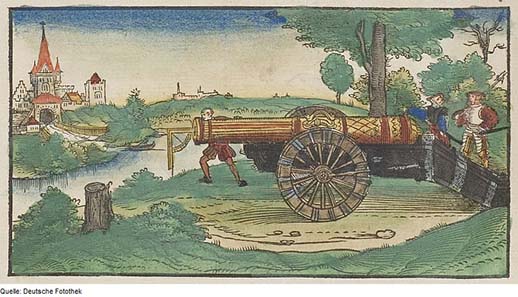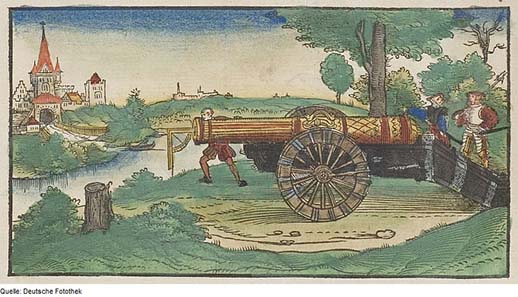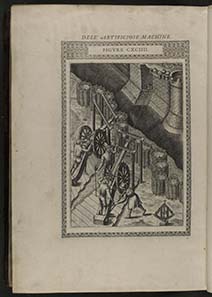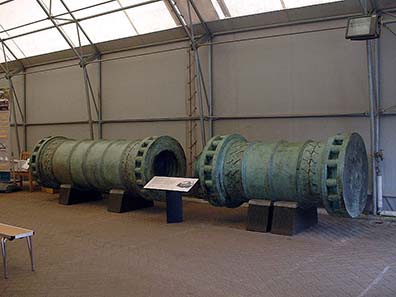War is father of all
Yes, there have been times when the rulers had to ask the ruled before they were allowed to impose a new tax on them. Until late medieval times, dues to king and prince were granted by the subjects. The latter, of course, did so quite reluctantly. There had to be very good reasons before the assembly of the estates were willing to open the civic money bag. No major problem arose as long as the rulers had vast possessions at their disposal to recompense the one who rendered good service.
Depiction of a cannon from 1547. Source: Deutsche Fotothek / Wikipedia.
Not only today but back then, too, times changed and the expenses were on the rise. A new war technique came up, for example. At the beginning of early modern times, the cannon had been invented: at first, it was nothing more than a metal tube in which an explosion could be triggered, with the help of saltpeter, sulphur and charcoal, which was able to project a heavy stone bullet. Thanks to that, the military commanders finally possessed an effective means to take a city by storm. That had been extremely difficult until then. Most cities went down either after a long siege, due to treason, or not at all. Anyone fighting a war, therefore, wanted to get his hand on this miracle weapon. But cannons were expensive.
From: Le diverse et artificiose machine del capitano Agostino Ramelli, 1588. Source: Library of Congress / Wikipedia.
Hence, the council of the imperial city of Frankfurt am Main, for example, paid 1,076 gulden, 14 solidi and 5 heller for a big cannon in 1394. The material and the wage for the founder were included. With that amount of money 442 cattle could have been traded. A little bit later, the Order of Teutonic Knights got itself a “hand cannon”. It was transported to the Marienburg in 1409 and cost the equivalent of 5 war horses or 80 tons of herring. In Görlitz in 1432, 460 three-score groschen were spent on two cannons able to shot stone bullets. That equated 418 cattle. Hence, such a cannon cost a small fortune.
Black powder. Source: Oliver H. / Wikipedia.
The acquisition, however, was not everything. Gun carriages had to be built, and carthorses were needed to transport the cannons, stone bullets had to be chiseled manually. Not to forget the powder. Charcoal and sulphur were cheap, but salpeter! In the 14th century, that raw material came from India and was imported via Venice that could dictate prices. In 1380, in Frankfurt and Nuremberg 52 gulden had to be paid for a centner of saltpeter. For that, more than two cattle could have been bought. One single shot from a cannon cost 21 gulden, 18 solidi – more than a good dairy cow. Luckily, the first cannons were able to shoot once a day only!
Two-part Ottoman heavy siege cannon. A similar one was responsible for the conquest of Constantinople in 1453. Photograph: Wikipedia.
It becomes obvious what cost explosion the use of cannons generated for the war parties. The princes soon realized that were not able to hold the cities’ pace, with the latter’s regular revenues from customs duties and taxes. The free imperial cities got themselves cannons, and the princes were allowed to borrow them. It seems safe to assume that more than one ruler contemplated the setting up of its own artillery. What was more logical, then, than working towards a well-arranged tax system. The enforcement of that, however, was about to take centuries.









